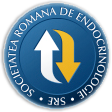
- Login
- Register
- Home/Current Issue
- About the journal
- Editorial board
- Online submission
- Instructions for authors
- Subscriptions
- Foundation Acta Endocrinologica
- Archive
- Contact
 Romanian Academy
Romanian Academy
 The Publishing House of the Romanian Academy
The Publishing House of the Romanian Academy

ACTA ENDOCRINOLOGICA (BUC)
The International Journal of Romanian Society of Endocrinology / Registered in 1938in Web of Science Master Journal List
Acta Endocrinologica(Bucharest) is live in PubMed Central
Journal Impact Factor - click here.

-
Endocrine Care
Atmaca M, Ozturk M, Ozbay MF, Ergenç E, Gönüllü E, Çokluk E
TSH Levels in Pregnant Women with Iodine Deficiency before Spontaneous AbortusActa Endo (Buc) 2014 10(4): 621-628 doi: 10.4183/aeb.2014.621
AbstractBackground. Iodine deficiency and/or thyroid autoimmunity are the most common causes of hypothyroidism development among pregnant women. In this study, we aimed to investigate the effect of iodine consumption and thyroid autoimmunity on TSH levels and abortus. The study sample consisted of 104 patients, 79 in abortus and 25 in control groups. TSH, free T4, free T3, anti-TPO, anti-Tg, spot urinary iodine concentrations, and thyroid volumes of the cases were measured by ultrasonography. The spot urine concentration was below 100 μg/L in 93% of the cases included in the study. The TSH levels of the abortus group cases were significantly higher than those of the controls (p=0.025). The percentage of subclinical hypothyroid cases were significantly higher among the cases evaluated due to abortus compared to the control group (p<0.001). Abortus and control groups did not differ statistically with respect to the presence of autoimmune thyroid diseases (p=0.424). Spot urine iodine concentrations of abortus cases with subclinical hypothyroid were significantly lower than those with TSH levels below the defined range (p=0.001). Spot urine iodine concentrations of the cases with subclinical abortus with negative thyroid autoantibodies were also significantly lower than those with TSH levels below the defined range (p=0.017). TSH levels above 1 μIU/mL for the first trimester and 2 μIU/mL for the second trimester may be indicators of iodine nutrition in pregnancy losses. -
Case Report
Macovei L, Anghel L, Statescu C, Arsenescu Georgescu C
Complication with Vital Risk in Marfan SyndromeActa Endo (Buc) 2013 9(4): 623-630 doi: 10.4183/aeb.2013.623
AbstractBackground. Aortic dissection is a life-threatening disorder and up to 20% of patients die before receiving medical care. Marfan syndrome is noted in 5–9% of individuals who suffer from aortic dissection. Case presentation. We present the case of a 53 years old woman, with undiagnosed Marfan syndrome, addressed to our clinic complaining about thoracolumbar pain appeared 4 days ago, after a trauma. According to the revised Ghent criteria for the diagnostic of Marfan syndrome she had a positive family history and more than 7 points of systemic findings. She was also diagnosed with extensive aortic dissection and right pneumothorax. Because of the cachexia and important scoliosis, the operative and post operative risk was high and we decided a medical management. She remained haemodynamically stable, with a false lumen partially trombosed, and was discharged home after 23 days. Discussion. The particularity of our case represent the diagnostic of Marfan syndrome after the appearance of a vital risk vascular complication – aortic dissection, the emergency surgical intervention being limited by the clinical and prognostical particularities of these two comorbidities. Conclusion. Aortic dissection in Marfan syndrome represents a diagnostic and therapeutic challenge for interdisciplinary practitioner physicians. -
Endocrine Care
Tanase DM, Vulpoi C, Ionescu SD, Ouatu A, Ambarus V, Arsenescu-Georgescu C
Effects of Subclinical and Overt Primary Hypothyroidism on the Cardiac Function and their Reversibility under Treatment Using Tissue Doppler EchocardiographyActa Endo (Buc) 2014 10(4): 640-654 doi: 10.4183/aeb.2014.640
AbstractBackground. The modifications of blood pressure and lipid metabolism, the decrease of heart contractility and the increase of systemic vascular resistance that accompany hypothyroidism are caused by the decreased action of thyroid hormones. Objective. The purpose of this study is to evaluate, using echocardiography, the changes of the heart functional parameters in patients with untreated thyroid dysfunctions. Pacients and Methods. Study group included 348 patients for an evaluation of cardiovascular and thyroid status. The control of the thyroid condition was conducted using measurements of the FT3, FT4 and TSH levels, echocardiographic measurements defining the parameters of the function of the left ventricle. Results. The study group was divided into subclinical hypothyroidism (SH, 75 cases), overt hypothyroidism (OH, 123 patients) and normal thyroid function (C, 150 patients). TSH values decreased (from 5.8±15 mUI/L to 2.28±0.63 mUI/L in SH and from 20.23±17.33 mUI/L to 4.24±0.24 mUI/L in OH) after one year of treatment while fT4 and fT3 increased. The parameters obtained revealed significant decreases of the E/A ratio in both groups with hypothyroidism. The isovolumetric relaxation time was significantly higher in SH and OH as compared to the control group (C: 112.50±35.45 msec, SH: 118.75±16.52 msec p<0.05, OH: 130±41.83 msec p<0.001). In addition, the tissue Doppler revealed significant decreases of the E’/A’ ratio, measured septally and laterally in the group with overt and subclinical hypothyroidism. Conclusion. In hypothyroidism the systolic and predominantly diastolic function of the left ventricle are impaired. These dysfunctions are reversible under L-T4 substitutive treatment.